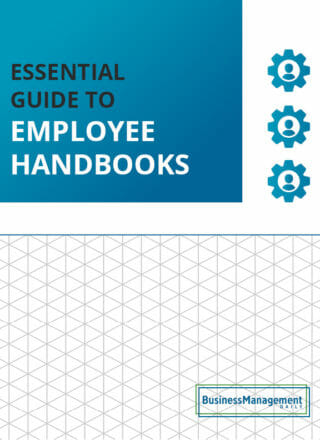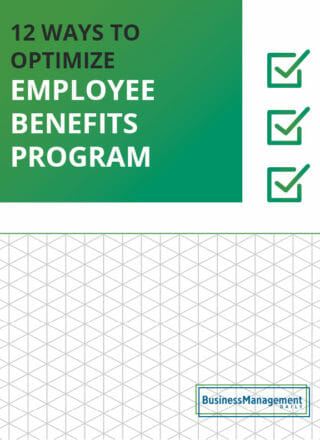Bereavement leave policy template and examples
 Why offer bereavement leave?
Why offer bereavement leave?
Unfortunately, we all will encounter the loss of a family member or close friend in our lives. One of the best ways employers can support employees in dealing with these losses is to offer bereavement leave.
Bereavement leave is an often overlooked form of paid time off. A bereavement policy is an excellent way to support employees.
Here’s what you need to know to create or update a bereavement leave policy.
What is bereavement leave?
Bereavement leave is paid or unpaid time off from work granted to employees after the death of a family member or loved one. It allows individuals to grieve, make funeral arrangements, attend memorial services, and handle other personal matters related to the loss.
Bereavement leave can serve as funeral leave for employees who need to travel to a family member’s funeral. Additionally, employees can use it immediately after a death.
This allows them time to be with their family and process their loss. Therefore, requests for bereavement leave will vary based on each employee’s situation.
What is a bereavement leave policy?
A bereavement leave policy is a written document that outlines the policies and procedures around bereavement leave. It’s typically included in the employee handbook and covers key information, such as:
- What family members does the policy extend to?
- Eligibility requirements for taking bereavement leave include whether you need to be a full-time employee or have reached a certain length of service with the company.
- How employees should notify human resources or their boss of their need to take bereavement leave.
- Any documentation requirements.
- If the leave is paid.
- How much time off is available?
As with any written policy, a bereavement leave policy should be comprehensive and legally compliant.
Best practices for writing a bereavement leave policy
Here are some key things to consider when crafting and implementing a bereavement leave policy for your workplace.
Be clear and address common questions
It’s essential to have a clear and well-defined bereavement leave policy to clarify who is eligible, the amount of leave provided, and any necessary documentation or procedures. To minimize questions or confusion, try to touch on all the key points listed above.
When crafting this policy, try to be as compassionate and considerate as possible. You don’t want people to take advantage of this policy with false deaths.
However, you don’t want to be the employer that insensitively asks for mountains of paperwork when an employee has just found out that their parent died.
Be compassionate and flexible
One thing to keep in mind is that some bereavement absences will be somewhat pre-planned (such as taking time off to travel for a scheduled funeral service) and come with almost no notice (such as a sudden, unexpected death of an immediate family member). Therefore, your policy will need some flexibility.
Suppose it’s an absence that could not be anticipated. In that case, you shouldn’t expect employees to make arrangements to cover shifts at the last minute or provide immediate documentation if they’ve just heard the news of a sudden death.
You’ll also have to keep in mind that those calling out for a death that has just occurred may not have documentation available. Death certificates, obituaries, and funeral documentation take time to create or procure after a loss. Provide flexibility if requesting documentation for absences.
Benefits of bereavement leave policies
Offering bereavement leave supports employees by providing them the necessary time and emotional space to cope with their loss.
Paid leave gives employees time to make arrangements, attend funerals, and process the loss without worrying about work obligations. Also, it helps to alleviate the financial burden of taking time off.
It also benefits employers by fostering a caring and supportive work environment and showcasing their commitment to employee well-being, which can boost employee morale and loyalty.
Employees and recruits care deeply about your benefits and leave offerings when evaluating your company as a potential or continued employer. They’ll also remember how they were treated during difficult times, such as a tragic loss.
Putting a bereavement leave policy on the books and coupling it with genuine care and compassion for your team members will create a positive work environment that employees won’t want to leave.
Providing additional resources beyond bereavement leave
It’s important to remember that an employee’s grief doesn’t end when their bereavement leave ends. Grief is a complex, unending journey that often isn’t linear. The loss will be felt as things come up, such as birthdays, holidays, and death anniversaries.
As such, it’s a good idea to offer resources for employees to use as they return from bereavement leave or if they need extended time off to process their grief or handle familial obligations.
Employee assistance programs
An employee assistance program (EAP) is a form of employee benefit that offers resources to employees dealing with grief and loss, among other personal issues.
EAP benefits typically include several counseling sessions per period, which employees may use if they need grief counseling. EAPs also include helpful referral services. For example, they can assist employees with financial planning, elder care, and legal aid.
Furthermore, they can help with updating estate plans and other concerns that may arise after a loss. This is a valuable benefit for employees. It provides them with a resource to consult when personal issues affect them. This could include a family death or other challenges.
Lastly, remember to remind employees about this benefit when they return from bereavement leave
Additional time off
The death of an immediate relative can strain employees’ mental health, and they may need time away to process their grief and seek support. When this happens, a few options exist for offering additional time off.
PTO and sick leave can be taken if employees need to extend their bereavement leave for a few days. However, some options may be available for more extended leave needs.
Suppose the individual is suffering from a mental health condition related to the loss, such as PTSD or prolonged grief disorder. In that case, they may qualify for time off under the Family and Medical Leave Act (FMLA) or a short-term disability program.
FMLA leave covers up to 12 weeks of unpaid leave within a 12-month period for eligible employees taking time off for covered medical or family matters.
Time off under short-term disability is often paid. However, requirements and benefits offerings will vary based on the disability insurance provider or program.
Many companies also offer personal leave, a form of unpaid leave available to employees who need time off for reasons that may not qualify under other leave programs.
Offering personal leave is a low-cost and flexible way for employers to support employee well-being. It provides flexibility for employees who must extend their bereavement leave or take time off for other personal purposes.
Here are some of the most common questions from employees and employers about bereavement leave.
Is it mandatory for employers to offer bereavement leave?
This will depend on where you operate. There is no federal law requiring employers to offer bereavement leave to employees. However, several states do have laws requiring employers to provide this leave. Bereavement leave may also be required as part of collective bargaining agreements.
Is bereavement leave paid?
State law might require paid bereavement leave in your area. However, if not, employers can decide whether to offer it as paid or unpaid time off. Many employers now offer paid bereavement leave.
This helps them meet industry standards and support employees. It also reduces the financial burden that families often face after a loss.
Who is considered immediate family for bereavement leave?
Bereavement leave generally extends to parents, spouses, domestic partners, children, siblings, grandparents, foster children, and grandchildren. Stepchildren, step-parents, and relatives by marriage may also be included.
However, many employers have chosen to expand this definition, as families can all look different. Some policies include in-laws, aunts, uncles, cousins, or long-term partners. Pet bereavement leave is becoming more common, with employers recognizing pets’ vital role in people’s lives and families.
How long is bereavement leave usually?
Most employers offer three to five days of bereavement leave. However, as with any policy you create, it’s important to check your state laws. California, Oregon, Washington, Illinois, and Maryland currently have bereavement leave laws requiring time off ranging from three workdays to up to two weeks.
Are employees required to provide advance notice for bereavement leave?
Employees should provide advance notice when possible. Such as when they learn of the planned funeral date that they will need off. Of course, some flexibility is required here, as sometimes the employee will need more immediate leave to process the loss and make the funeral arrangements themselves.
More resources:
ADA compliant substance abuse policy ![]()
Employee leave of absence policy guide ![]()
PTO request policy: A comprehensive guide for employers ![]()






